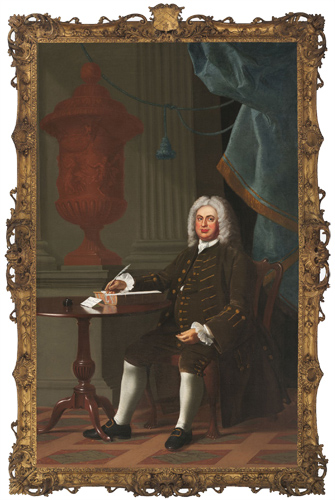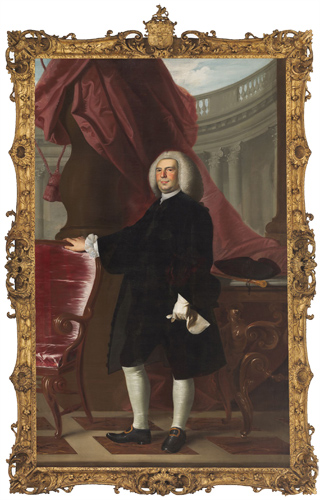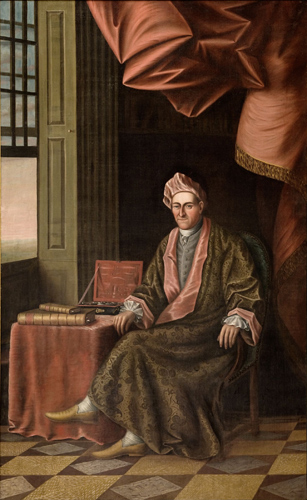On an overcast December day, a group of about two dozen curators, professors, artists, and students interrupted the stillness of Harvard Hall to explore the room formerly known as the Philosophy Chamber. They climbed two flights of stairs and threw open the doors to a space that has endured, in various forms, for 250 years.
Room 202, as it is known today, has pale yellow walls with white wainscoting, tall rectangular windows, slate chalkboards, and wooden lecterns. Rows of blue auditorium-style seats are bolted to the floor. From 1766 until 1820, however, this room was filled with portraits, prints, scientific instruments, and curios obtained abroad by Harvard graduates. Considered one of the grandest public spaces in America in its time, the Philosophy Chamber drew visitors from around the world.
Ethan Lasser, the Theodore E. Stebbins Jr. Curator of American Art and head of the museums’ Division of European and American Art, has embarked on a time travel mission of sorts: he is organizing an upcoming exhibition that will largely reassemble the original Philosophy Chamber collection. (See our previous Index article for details about early steps in the exhibition’s development.) As part of his research and planning, Lasser brought together the small group, invited from across Harvard and other universities, to participate in a special Philosophy Chamber study day. The group’s visit to the historic space in Harvard Hall was a highlight of the session.
Inside Room 202, Lasser gestured toward the tall ceiling above one entrance. “We think a drawing of Dighton Rock hung over this door,” he said. The four-by-twelve-foot ink work depicting a Massachusetts landmark with mysterious petroglyphs is currently in the collection of Harvard’s Peabody Museum of Archaeology and Ethnology and will be featured in the exhibition. A few people nodded their heads in recognition; this had been discussed in a morning roundtable workshop about exhibition content and layout.
“The room is really quite large—larger than I thought,” one participant observed, glancing around.
Lasser said elements of the space surprised even him, particularly on cloudy days when the light is dim. “Every time I come in here, it has this lighting condition, which is much darker than the way we’re used to seeing art and objects today,” he said. Since there was no electricity in the 18th century, “I’m sure there would have been many days like this.”
The Harvard Hall visit was followed by an afternoon in the museums’ Art Study Center. The group viewed paintings that originally hung in the Philosophy Chamber and that will likely be shown in the exhibition. These included three John Singleton Copley portraits: Nicholas Boylston (1716-1771), Thomas Hollis III (1659-1731), and Thomas Hancock (1703-1764), as well as Edward Savage’s Ezekiel Hersey (1709-1770).
Study days provide wonderful opportunities for curators to gain fresh insights into their latest projects. Among the takeaways were suggestions on how to organize effective and relevant programming related to the exhibition, including events that might be held inside the original Philosophy Chamber.
“It was hugely productive for us,” Lasser said. “There were lots of new ideas about how to present the material, and many new questions arose from a variety of perspectives. It was transformative for the exhibition.”




